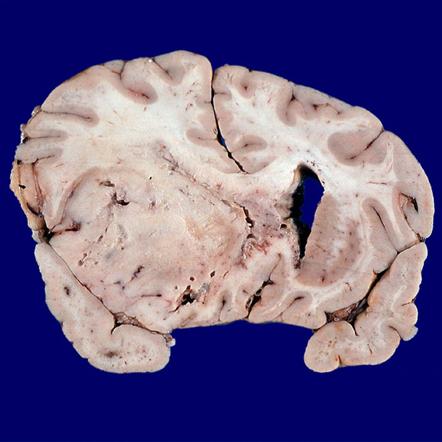Anaplastic astrocytomas

Anaplastic astrocytomas
Contact Us
Related Videos :
Frequently Asked Questions :
1. What is the prognosis for anaplastic astrocytoma?
The prognosis depends on several factors, including the tumor’s size, location, and the patient’s overall health. While anaplastic astrocytomas are aggressive, early diagnosis and advanced treatments can improve survival rates and quality of life.
2. Can anaplastic astrocytoma be completely cured?
Complete cure is challenging due to the tumor’s aggressive nature, but with surgery, radiation, and chemotherapy, the tumor’s growth can often be controlled, allowing patients to live longer and with better quality of life.
3. How soon should treatment begin after diagnosis?
Treatment should begin as soon as possible after diagnosis to prevent further growth and spread of the tumor. A quick intervention often results in better outcomes.

About Anaplastic Astrocytoma
Anaplastic astrocytomas are rare and aggressive brain tumors that arise from astrocytes, a type of glial cell. These tumors fall under the category of gliomas and are considered grade III in the World Health Organization (WHO) classification, indicating rapid growth and a tendency to spread within the brain.
Dr. Sandeep Vaishya, an expert neurosurgeon with extensive experience in treating brain tumors, specializes in offering advanced and personalized treatments for anaplastic astrocytomas.
Causes of Anaplastic Astrocytoma
The exact causes of anaplastic astrocytomas are not fully understood, but certain factors may increase the risk of developing this type of brain tumor:
- Genetic Mutations: Changes in certain genes, such as TP53, IDH1, and IDH2, can play a role.
- Radiation Exposure: Previous exposure to high-dose radiation to the head may elevate the risk.
- Age: While these tumors can develop at any age, they are more common in adults between the ages of 30 and 50.
- Gender: Men are slightly more likely to develop anaplastic astrocytomas than women.
Types of Astrocytomas
Astrocytomas are categorized based on their aggressiveness and cellular characteristics:
- Low-Grade Astrocytomas (Grade I & II): These grow slowly and are less aggressive.
- Anaplastic Astrocytoma (Grade III): A fast-growing tumor with a higher potential for malignancy.
- Glioblastoma (Grade IV): The most aggressive type of astrocytoma with rapid growth and a poor prognosis.
Symptoms of Anaplastic Astrocytoma
Symptoms of anaplastic astrocytoma vary depending on the tumor’s size, location, and growth rate. Common symptoms include:
- Persistent Headaches: Often more severe in the morning.
- Seizures: A common symptom, particularly in patients without a prior history of epilepsy.
- Nausea and Vomiting: Resulting from increased intracranial pressure.
- Cognitive Changes: Memory issues, confusion, or personality changes.
- Neurological Deficits: Weakness in limbs, difficulty with balance, or speech problems.
If you experience any of these symptoms, consult Dr. Sandeep Vaishya for prompt evaluation and diagnosis.
Diagnosis of Anaplastic Astrocytoma
Early diagnosis is critical for effective treatment. Diagnostic tests for anaplastic astrocytoma typically include:
- Magnetic Resonance Imaging (MRI): The most common imaging technique to detect brain tumors.
- CT Scans: May be used alongside MRI to provide additional insights.
- Biopsy: A tissue sample from the tumor is examined to confirm the diagnosis and grade of the astrocytoma.
- Genetic Testing: Identifying mutations in IDH1 and IDH2 genes can help guide treatment decisions.
Treatment of Anaplastic Astrocytoma
Treatment of anaplastic astrocytomas requires a multidisciplinary approach, including surgery, radiation, and chemotherapy. Dr. Sandeep Vaishya offers cutting-edge treatments designed to maximize tumor removal while preserving brain function.
- Surgery: The primary treatment is removing as much of the tumor as possible through microsurgical techniques.
- Radiation Therapy: Often used post-surgery to target remaining tumor cells.
- Chemotherapy: Temozolomide is commonly used in combination with radiation therapy for enhanced effectiveness.
- Targeted Therapies and Clinical Trials: In certain cases, newer therapies or trials may be an option, offering hope for improved outcomes.
Cost of Anaplastic Astrocytoma Treatment and Stay in India
India, especially with renowned surgeons like Dr. Sandeep Vaishya, has become a hub for affordable and high-quality medical care. The cost of anaplastic astrocytoma treatment in India varies based on the complexity of the case, but it is significantly more affordable compared to Western countries. On average:
- Surgery Costs: $8,000 to $12,000 USD.
- Radiation and Chemotherapy: Additional $3,000 to $5,000 USD